On the Use of Benford's Law to Detect GAN-Generated Images
Nicolo Bonettini,
Paolo Bestagini,
Simone Milani,
Stefano Tubaro

Auto-TLDR; Using Benford's Law to Detect GAN-generated Images from Natural Images
Similar papers
Computational Data Analysis for First Quantization Estimation on JPEG Double Compressed Images
Sebastiano Battiato, Oliver Giudice, Francesco Guarnera, Giovanni Puglisi

Auto-TLDR; Exploiting Discrete Cosine Transform Coefficients for Multimedia Forensics
Abstract Slides Poster Similar
Video Face Manipulation Detection through Ensemble of CNNs
Nicolo Bonettini, Edoardo Daniele Cannas, Sara Mandelli, Luca Bondi, Paolo Bestagini, Stefano Tubaro

Auto-TLDR; Face Manipulation Detection in Video Sequences Using Convolutional Neural Networks
A NoGAN Approach for Image and Video Restoration and Compression Artifact Removal
Mameli Filippo, Marco Bertini, Leonardo Galteri, Alberto Del Bimbo

Auto-TLDR; Deep Neural Network for Image and Video Compression Artifact Removal and Restoration
Adaptive Image Compression Using GAN Based Semantic-Perceptual Residual Compensation
Ruojing Wang, Zitang Sun, Sei-Ichiro Kamata, Weili Chen

Auto-TLDR; Adaptive Image Compression using GAN based Semantic-Perceptual Residual Compensation
Abstract Slides Poster Similar
Trainable Spectrally Initializable Matrix Transformations in Convolutional Neural Networks
Michele Alberti, Angela Botros, Schuetz Narayan, Rolf Ingold, Marcus Liwicki, Mathias Seuret

Auto-TLDR; Trainable and Spectrally Initializable Matrix Transformations for Neural Networks
Abstract Slides Poster Similar
Continuous Learning of Face Attribute Synthesis
Ning Xin, Shaohui Xu, Fangzhe Nan, Xiaoli Dong, Weijun Li, Yuanzhou Yao

Auto-TLDR; Continuous Learning for Face Attribute Synthesis
Abstract Slides Poster Similar
High Resolution Face Age Editing
Xu Yao, Gilles Puy, Alasdair Newson, Yann Gousseau, Pierre Hellier

Auto-TLDR; An Encoder-Decoder Architecture for Face Age editing on High Resolution Images
Abstract Slides Poster Similar
Generating Private Data Surrogates for Vision Related Tasks
Ryan Webster, Julien Rabin, Loic Simon, Frederic Jurie
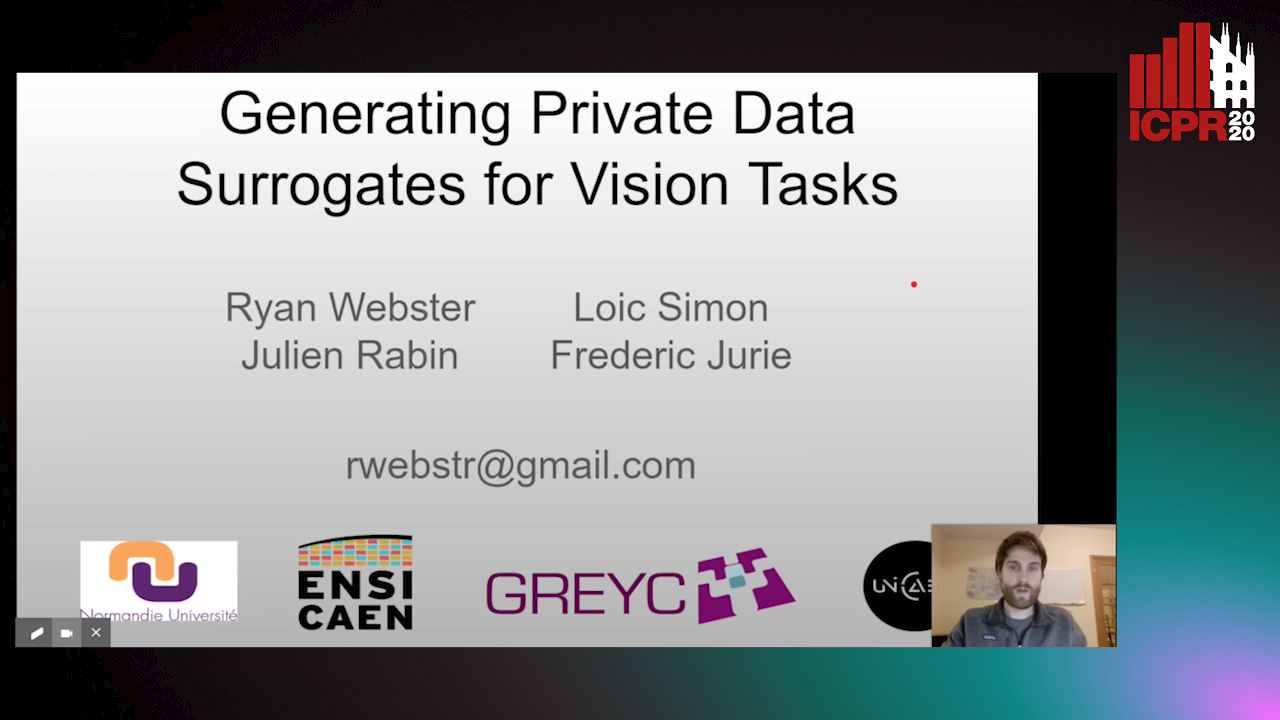
Auto-TLDR; Generative Adversarial Networks for Membership Inference Attacks
Abstract Slides Poster Similar
Which are the factors affecting the performance of audio surveillance systems?
Antonio Greco, Antonio Roberto, Alessia Saggese, Mario Vento

Auto-TLDR; Sound Event Recognition Using Convolutional Neural Networks and Visual Representations on MIVIA Audio Events
Detecting Manipulated Facial Videos: A Time Series Solution
Zhang Zhewei, Ma Can, Gao Meilin, Ding Bowen

Auto-TLDR; Face-Alignment Based Bi-LSTM for Fake Video Detection
Abstract Slides Poster Similar
Local Facial Attribute Transfer through Inpainting
Ricard Durall, Franz-Josef Pfreundt, Janis Keuper

Auto-TLDR; Attribute Transfer Inpainting Generative Adversarial Network
Abstract Slides Poster Similar
Age Gap Reducer-GAN for Recognizing Age-Separated Faces
Daksha Yadav, Naman Kohli, Mayank Vatsa, Richa Singh, Afzel Noore

Auto-TLDR; Generative Adversarial Network for Age-separated Face Recognition
Abstract Slides Poster Similar
SATGAN: Augmenting Age Biased Dataset for Cross-Age Face Recognition
Wenshuang Liu, Wenting Chen, Yuanlue Zhu, Linlin Shen

Auto-TLDR; SATGAN: Stable Age Translation GAN for Cross-Age Face Recognition
Abstract Slides Poster Similar
Boosting High-Level Vision with Joint Compression Artifacts Reduction and Super-Resolution
Xiaoyu Xiang, Qian Lin, Jan Allebach

Auto-TLDR; A Context-Aware Joint CAR and SR Neural Network for High-Resolution Text Recognition and Face Detection
Abstract Slides Poster Similar
Learning Disentangled Representations for Identity Preserving Surveillance Face Camouflage
Jingzhi Li, Lutong Han, Hua Zhang, Xiaoguang Han, Jingguo Ge, Xiaochu Cao

Auto-TLDR; Individual Face Privacy under Surveillance Scenario with Multi-task Loss Function
Object Detection in the DCT Domain: Is Luminance the Solution?
Benjamin Deguerre, Clement Chatelain, Gilles Gasso

Auto-TLDR; Jpeg Deep: Object Detection Using Compressed JPEG Images
Abstract Slides Poster Similar
On the Impact of Lossy Image and Video Compression on the Performance of Deep Convolutional Neural Network Architectures
Matt Poyser, Toby Breckon, Amir Atapour-Abarghouei

Auto-TLDR; The Impact of Lossy Image Compression on Deep Neural Networks for Image-based Detection and Classification
Robust Pedestrian Detection in Thermal Imagery Using Synthesized Images
My Kieu, Lorenzo Berlincioni, Leonardo Galteri, Marco Bertini, Andrew Bagdanov, Alberto Del Bimbo

Auto-TLDR; Improving Pedestrian Detection in the thermal domain using Generative Adversarial Network
Abstract Slides Poster Similar
Towards Artifacts-Free Image Defogging
Gabriele Graffieti, Davide Maltoni

Auto-TLDR; CurL-Defog: Learning Based Defogging with CycleGAN and HArD
A Quantitative Evaluation Framework of Video De-Identification Methods
Sathya Bursic, Alessandro D'Amelio, Marco Granato, Giuliano Grossi, Raffaella Lanzarotti

Auto-TLDR; Face de-identification using photo-reality and facial expressions
Abstract Slides Poster Similar
InsideBias: Measuring Bias in Deep Networks and Application to Face Gender Biometrics
Ignacio Serna, Alejandro Peña Almansa, Aythami Morales, Julian Fierrez

Auto-TLDR; InsideBias: Detecting Bias in Deep Neural Networks from Face Images
Abstract Slides Poster Similar
Multi-Domain Image-To-Image Translation with Adaptive Inference Graph
The Phuc Nguyen, Stéphane Lathuiliere, Elisa Ricci

Auto-TLDR; Adaptive Graph Structure for Multi-Domain Image-to-Image Translation
Abstract Slides Poster Similar
Cascade Attention Guided Residue Learning GAN for Cross-Modal Translation
Bin Duan, Wei Wang, Hao Tang, Hugo Latapie, Yan Yan

Auto-TLDR; Cascade Attention-Guided Residue GAN for Cross-modal Audio-Visual Learning
Abstract Slides Poster Similar
AdaFilter: Adaptive Filter Design with Local Image Basis Decomposition for Optimizing Image Recognition Preprocessing
Aiga Suzuki, Keiichi Ito, Takahide Ibe, Nobuyuki Otsu
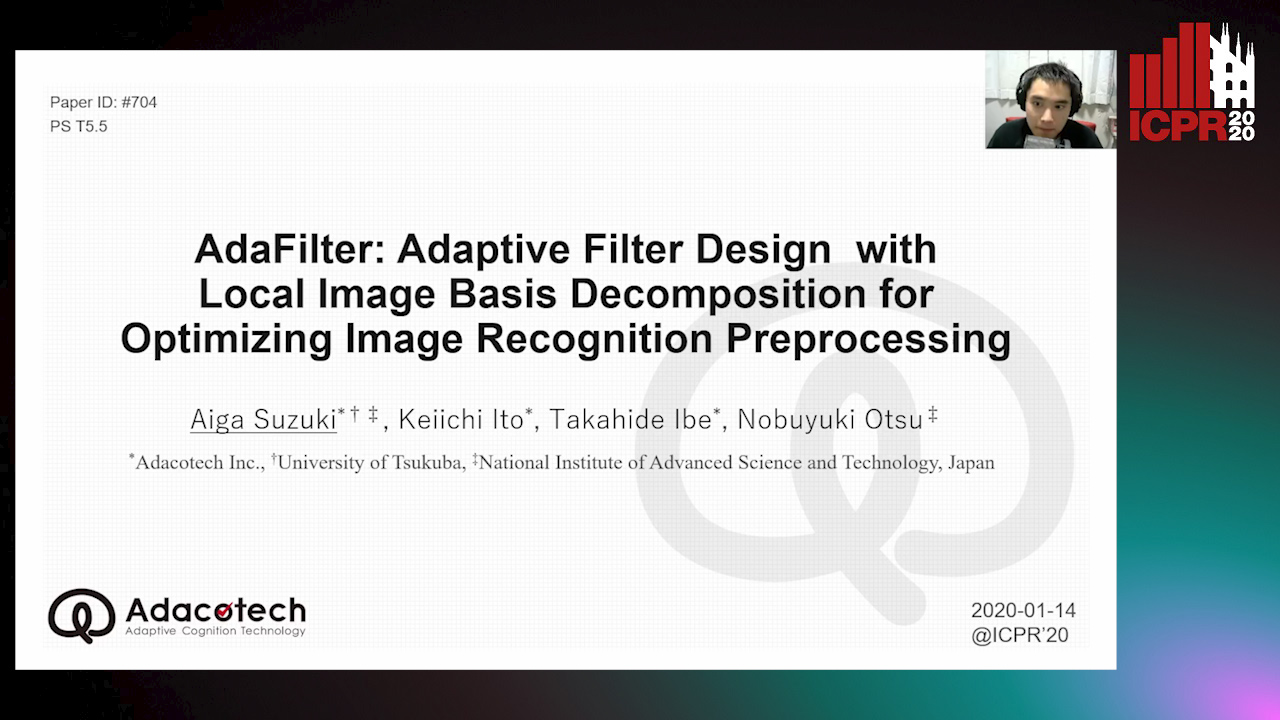
Auto-TLDR; Optimal Preprocessing Filtering for Pattern Recognition Using Higher-Order Local Auto-Correlation
Abstract Slides Poster Similar
Tarsier: Evolving Noise Injection inSuper-Resolution GANs
Baptiste Roziere, Nathanaël Carraz Rakotonirina, Vlad Hosu, Rasoanaivo Andry, Hanhe Lin, Camille Couprie, Olivier Teytaud

Auto-TLDR; Evolutionary Super-Resolution using Diagonal CMA
Abstract Slides Poster Similar
Automatic Tuberculosis Detection Using Chest X-Ray Analysis with Position Enhanced Structural Information
Hermann Jepdjio Nkouanga, Szilard Vajda

Auto-TLDR; Automatic Chest X-ray Screening for Tuberculosis in Rural Population using Localized Region on Interest
Abstract Slides Poster Similar
Unsupervised Face Manipulation Via Hallucination
Keerthy Kusumam, Enrique Sanchez, Georgios Tzimiropoulos

Auto-TLDR; Unpaired Face Image Manipulation using Autoencoders
Abstract Slides Poster Similar
AVAE: Adversarial Variational Auto Encoder
Antoine Plumerault, Hervé Le Borgne, Celine Hudelot

Auto-TLDR; Combining VAE and GAN for Realistic Image Generation
Abstract Slides Poster Similar
Bridging the Gap between Natural and Medical Images through Deep Colorization
Lia Morra, Luca Piano, Fabrizio Lamberti, Tatiana Tommasi

Auto-TLDR; Transfer Learning for Diagnosis on X-ray Images Using Color Adaptation
Abstract Slides Poster Similar
DFH-GAN: A Deep Face Hashing with Generative Adversarial Network
Bo Xiao, Lanxiang Zhou, Yifei Wang, Qiangfang Xu

Auto-TLDR; Deep Face Hashing with GAN for Face Image Retrieval
Abstract Slides Poster Similar
Level Three Synthetic Fingerprint Generation
Andre Wyzykowski, Mauricio Pamplona Segundo, Rubisley Lemes
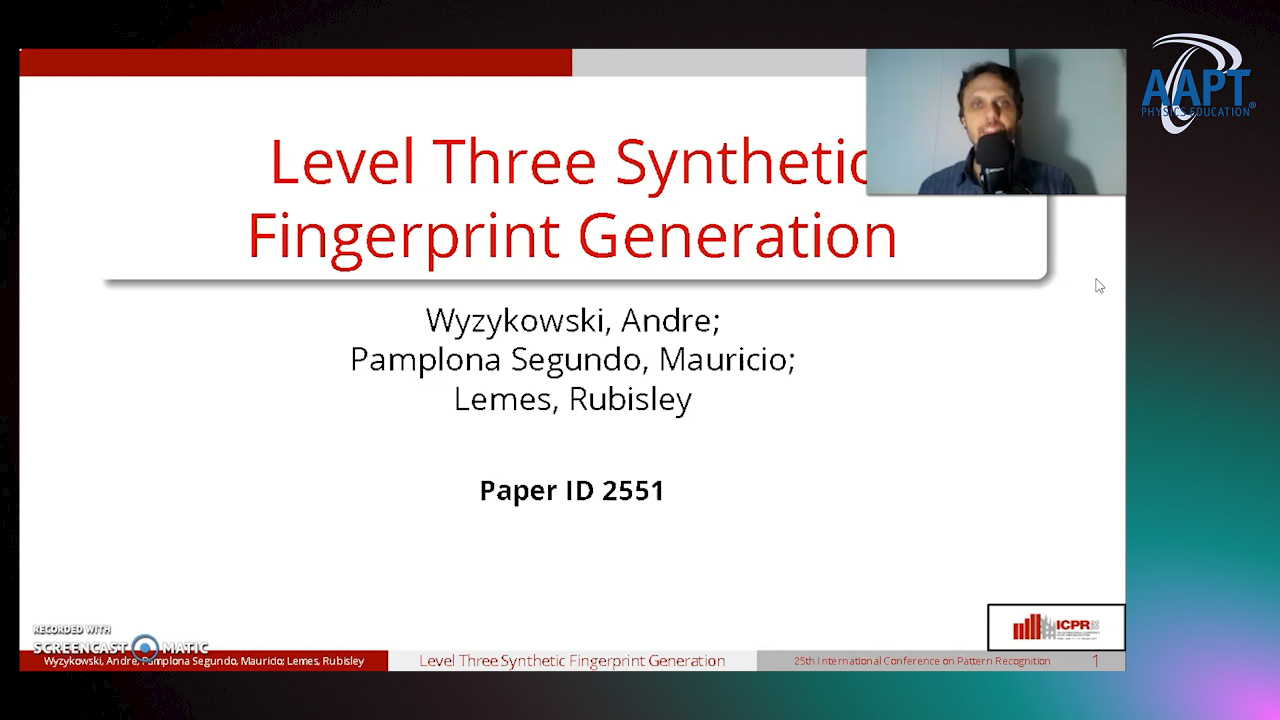
Auto-TLDR; Synthesis of High-Resolution Fingerprints with Pore Detection Using CycleGAN
Abstract Slides Poster Similar
Attribute-Based Quality Assessment for Demographic Estimation in Face Videos
Fabiola Becerra-Riera, Annette Morales-González, Heydi Mendez-Vazquez, Jean-Luc Dugelay

Auto-TLDR; Facial Demographic Estimation in Video Scenarios Using Quality Assessment
Multimodal Side-Tuning for Document Classification
Stefano Zingaro, Giuseppe Lisanti, Maurizio Gabbrielli

Auto-TLDR; Side-tuning for Multimodal Document Classification
Abstract Slides Poster Similar
A Systematic Investigation on Deep Architectures for Automatic Skin Lesions Classification
Pierluigi Carcagni, Marco Leo, Andrea Cuna, Giuseppe Celeste, Cosimo Distante

Auto-TLDR; RegNet: Deep Investigation of Convolutional Neural Networks for Automatic Classification of Skin Lesions
Abstract Slides Poster Similar
Compression Strategies and Space-Conscious Representations for Deep Neural Networks
Giosuè Marinò, Gregorio Ghidoli, Marco Frasca, Dario Malchiodi

Auto-TLDR; Compression of Large Convolutional Neural Networks by Weight Pruning and Quantization
Abstract Slides Poster Similar
Pixel-based Facial Expression Synthesis
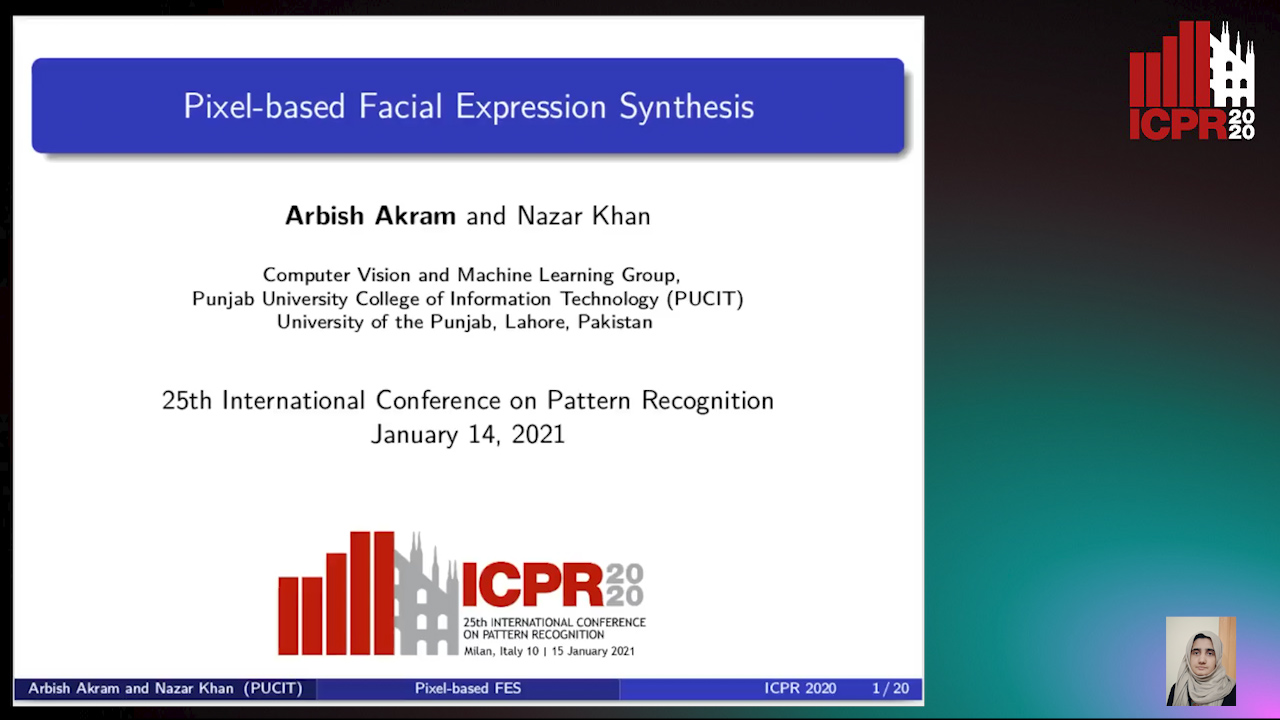
Auto-TLDR; pixel-based facial expression synthesis using GANs
Abstract Slides Poster Similar
Detection of Makeup Presentation Attacks Based on Deep Face Representations
Christian Rathgeb, Pawel Drozdowski, Christoph Busch

Auto-TLDR; An Attack Detection Scheme for Face Recognition Using Makeup Presentation Attacks
Abstract Slides Poster Similar
Lightweight Low-Resolution Face Recognition for Surveillance Applications
Yoanna Martínez-Díaz, Heydi Mendez-Vazquez, Luis S. Luevano, Leonardo Chang, Miguel Gonzalez-Mendoza

Auto-TLDR; Efficiency of Lightweight Deep Face Networks on Low-Resolution Surveillance Imagery
Abstract Slides Poster Similar
Galaxy Image Translation with Semi-Supervised Noise-Reconstructed Generative Adversarial Networks
Qiufan Lin, Dominique Fouchez, Jérôme Pasquet

Auto-TLDR; Semi-supervised Image Translation with Generative Adversarial Networks Using Paired and Unpaired Images
Abstract Slides Poster Similar
A Heuristic-Based Decision Tree for Connected Components Labeling of 3D Volumes
Maximilian Söchting, Stefano Allegretti, Federico Bolelli, Costantino Grana

Auto-TLDR; Entropy Partitioning Decision Tree for Connected Components Labeling
Abstract Slides Poster Similar
MBD-GAN: Model-Based Image Deblurring with a Generative Adversarial Network

Auto-TLDR; Model-Based Deblurring GAN for Inverse Imaging
Abstract Slides Poster Similar
Explorable Tone Mapping Operators
Su Chien-Chuan, Yu-Lun Liu, Hung Jin Lin, Ren Wang, Chia-Ping Chen, Yu-Lin Chang, Soo-Chang Pei
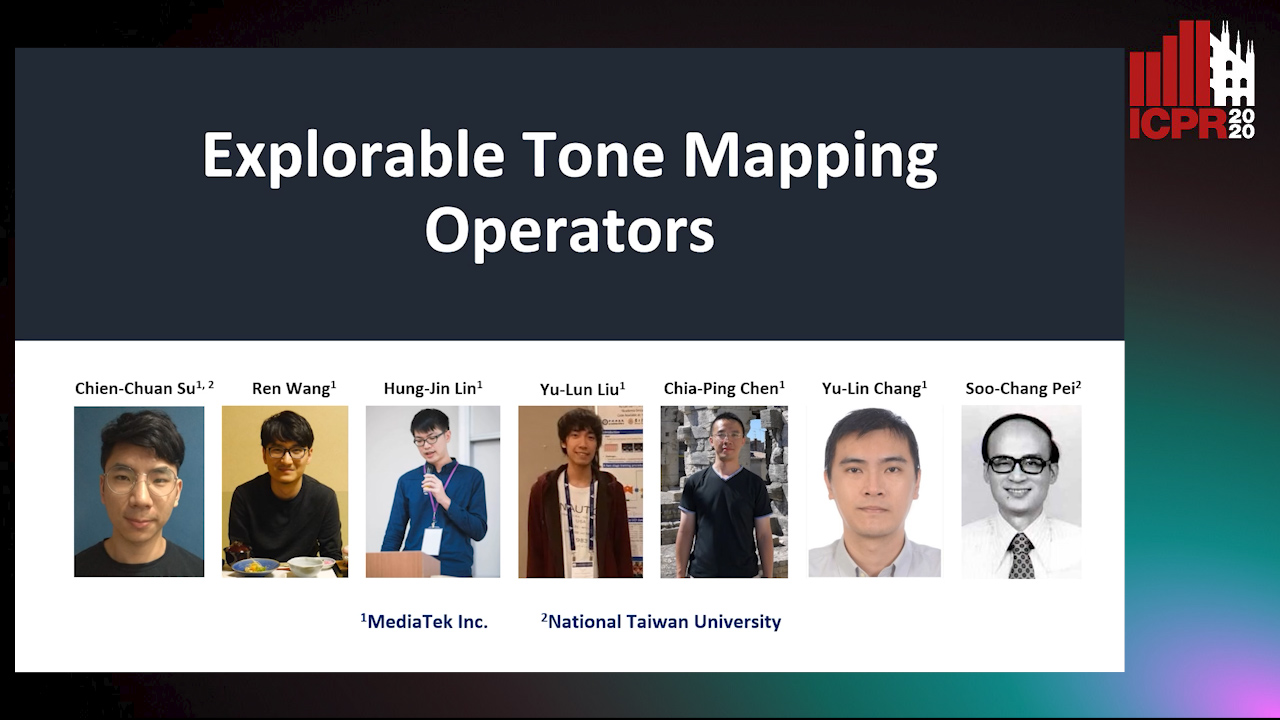
Auto-TLDR; Learning-based multimodal tone-mapping from HDR images
Abstract Slides Poster Similar
Delving in the Loss Landscape to Embed Robust Watermarks into Neural Networks
Enzo Tartaglione, Marco Grangetto, Davide Cavagnino, Marco Botta

Auto-TLDR; Watermark Aware Training of Neural Networks
Abstract Slides Poster Similar
Super-Resolution Guided Pore Detection for Fingerprint Recognition
Syeda Nyma Ferdous, Ali Dabouei, Jeremy Dawson, Nasser M. Nasarabadi

Auto-TLDR; Super-Resolution Generative Adversarial Network for Fingerprint Recognition Using Pore Features
Abstract Slides Poster Similar
Identity-Preserved Face Beauty Transformation with Conditional Generative Adversarial Networks

Auto-TLDR; Identity-preserved face beauty transformation using conditional GANs
Abstract Slides Poster Similar
SAGE: Sequential Attribute Generator for Analyzing Glioblastomas Using Limited Dataset
Padmaja Jonnalagedda, Brent Weinberg, Jason Allen, Taejin Min, Shiv Bhanu, Bir Bhanu
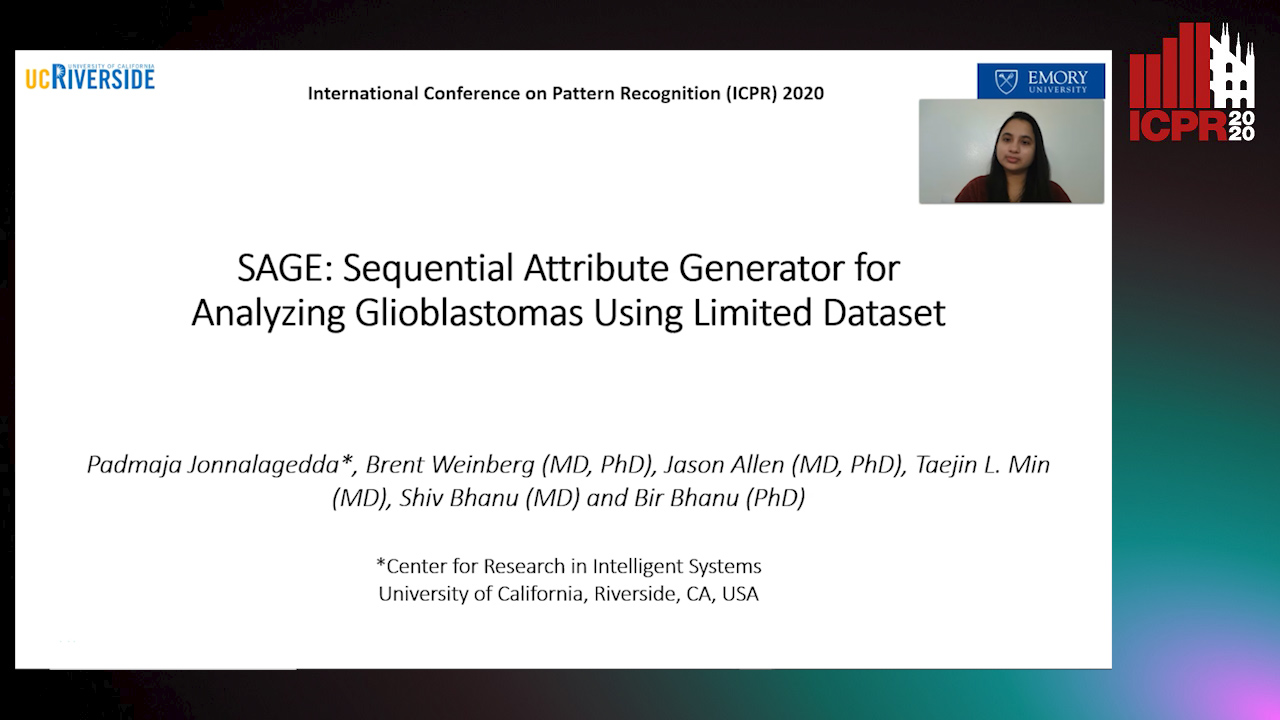
Auto-TLDR; SAGE: Generative Adversarial Networks for Imaging Biomarker Detection and Prediction
Abstract Slides Poster Similar
Deep Transfer Learning for Alzheimer’s Disease Detection
Nicole Cilia, Claudio De Stefano, Francesco Fontanella, Claudio Marrocco, Mario Molinara, Alessandra Scotto Di Freca

Auto-TLDR; Automatic Detection of Handwriting Alterations for Alzheimer's Disease Diagnosis using Dynamic Features
Abstract Slides Poster Similar
Digit Recognition Applied to Reconstructed Audio Signals Using Deep Learning
Anastasia-Sotiria Toufa, Constantine Kotropoulos
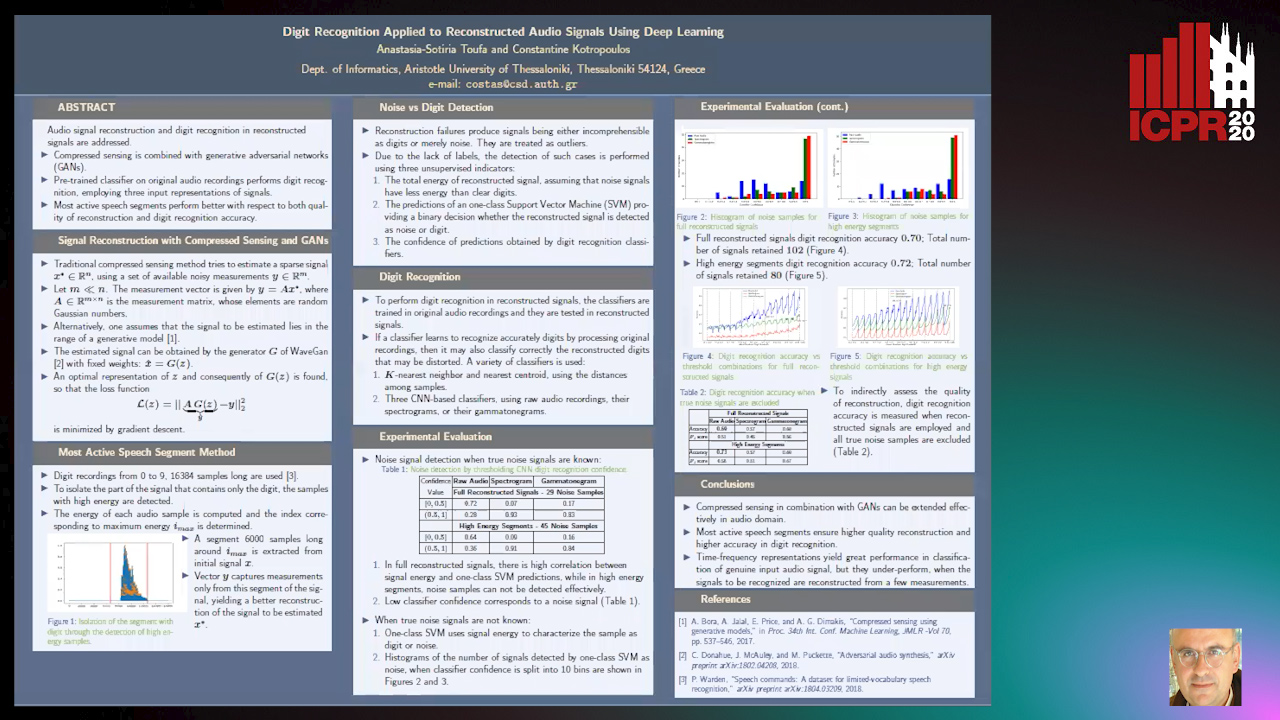
Auto-TLDR; Compressed Sensing for Digit Recognition in Audio Reconstruction